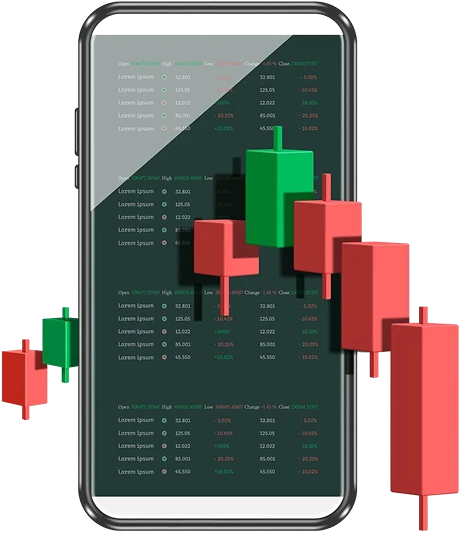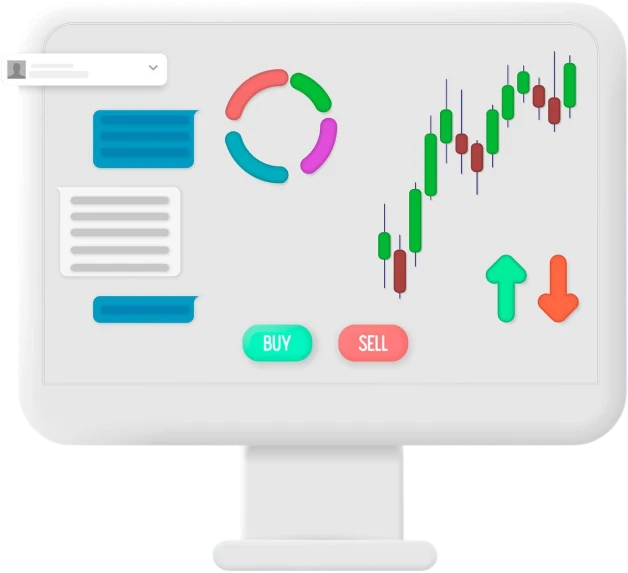Zuiver Tradelux
Adaptive Intelligence Expanded Through Zuiver Tradelux


Structured analytical tiers in Zuiver Tradelux monitor evolving motion patterns and reshape irregular signals into balanced interpretive pathways. Every refinement stage rebuilds incoming data into measured organisation, allowing adaptive frameworks to respond fluidly. Repeated behavioural traces emerge clearly, strengthening precision across unpredictable market environments.
Instant evaluation executed by Zuiver Tradelux examines gaps between model expectations and real motion, revealing deviations from projected activity. Fast recalibration alters analytical weighting, steering scattered behaviour into unified coherence that reflects prevailing conditions accurately.
Validation cycles within Zuiver Tradelux review predictive logic by aligning emerging formations with archived structural references. These measured comparisons reinforce interpretive steadiness, preserving clarity and dependable visibility as behavioural landscapes shift quickly.

Chronological assessment streams in Zuiver Tradelux merge ongoing behavioural information with validated historical references. Identifiable pattern loops are compared with earlier sequences to uphold coherence during market fluctuations. This reflective layering steadies interpretive rhythm and supports balanced understanding throughout shifting environmental phases.

Adaptive analysis within Zuiver Tradelux evaluates anticipated movement across layered predictive stages. Each analytical sweep matches future expectations with logged patterns, adjusting proportional judgement as new conditions arise. This process reinforces reliable continuity and preserves structured interpretation while reminding users that cryptocurrency markets are highly volatile and losses may occur.

Zuiver Tradelux links present data pathways with catalogued behavioural references to maintain accuracy during rapid shifts. Each recalibrated interval verifies projected behaviour against established structures, supporting balanced interpretation through expanding or contracting market signals. This disciplined review process sustains consistent forecasting and remains completely detached from exchange connections or trade execution.
Zuiver Tradelux runs stacked evaluation cycles that test projected behaviour against patterned records drawn from earlier market phases. Automated correlation blends historical context with active adjustment, helping retain consistent analytical accuracy. This ongoing comparison preserves structural steadiness and supports reliable forecasting during changing market conditions.

Zuiver Tradelux enables accurate reproduction of refined trading blueprints by converting guiding signals into synchronised activity flows. Expert based templates and program driven cues are followed with strict timing consistency, preserving proportional structure and maintaining unified behavioural direction across all mirrored participants.
Each duplicated model inside Zuiver Tradelux is examined continuously to confirm accurate reflection of its source pattern. Alignment checks correct divergence and sustain orderly analytical movement. Constant observation supports adaptive recalibration as market tempo shifts, securing coordinated motion and preventing operational interruption.
Protective oversight inside Zuiver Tradelux maintains disciplined regulation over replicated strategic activity, ensuring that each mirrored action aligns accurately with its guiding analytical model. Verification checks preserve intended structure across the entire process, keeping behavioural logic consistent. Layered encryption and secure information routing shield user accounts and stabilise synchronised operations. This controlled protection framework reinforces dependable performance while limiting risks linked to operational interference.
Self regulating analytical processes in Zuiver Tradelux review previous output, identify irregular shifts and update computational emphasis before imbalance affects current modelling. Each progressive cycle refreshes predictive structure, ensuring present analysis remains aligned and unaffected by superseded inputs.
Directional screening in Zuiver Tradelux separates meaningful movement from short term fluctuations. Excluding brief anomalies allows each analytical sweep to reflect authentic market flow, preserving clarity and stable interpretive rhythm throughout layered historical calibration.
Evaluation modules inside Zuiver Tradelux match forecast formations with verified results, recalibrating internal structure to narrow deviation. This synchronised refinement strengthens the relationship between prediction and observation over consecutive cycles.
Time layered assessment in Zuiver Tradelux compares active readings with recognised benchmarks, providing steady alignment as new data emerges. Continuous auditing maintains balanced interpretation and enables each stage to adapt swiftly during fast moving market conditions.
Multi stage feedback sequences merge adaptive tuning with consistent validation, supporting analytical precision across long term cycles. Each iteration heightens structural reliability and limits distortion, reinforcing durable predictive accuracy founded on established behavioural evidence.
Advanced recognition layers within Zuiver Tradelux detect minute behavioural shifts hidden beneath turbulent price motion. Fine scale irregularities are uncovered through multi tier scanning, reorganising fragmented data into a unified analytical stream. Each tuned iteration enhances interpretive sharpness, preserving structural balance through sudden market acceleration.
The evolving logic inside Zuiver Tradelux turns each analytical pass into an updated reference guide for continual refinement. Context weighted adjustment merges prior observations with current inputs, supporting consistent predictive flow across shifting behavioural cycles. Progressive recalibration strengthens alignment, building dependable interpretive insight over time.
Consistent evaluation across Zuiver Tradelux harmonises current analytical readings with preserved historical mappings. Each renewed cycle improves accuracy and reinforces structural steadiness. This adaptive continuity creates a reliable analytical base, maintaining clarity and coherence through complex and fast developing data conditions.

Automated analysis within Zuiver Tradelux delivers continuous observation across fluctuating market momentum. High speed recognition translates micro scale variance into consistent behavioural patterns. Each monitoring interval enhances structural equilibrium, supporting clear interpretation through accelerated market transitions.
Unbroken data orchestration inside Zuiver Tradelux aligns ongoing signals with stable analytical rhythm. Instant structural shifts adjust to active movement, refining turbulent transitions into coherent insight. This lasting process maintains dependable proportional balance across challenging market conditions.

Synchronized analysis through Zuiver Tradelux blends parallel behavioural inputs into a unified perspective. Sequential refinement removes brief distortions, retaining uninterrupted directional awareness. This combined filtering supports stable interpretation even through prolonged market turbulence.
Ongoing evaluation inside Zuiver Tradelux enhances interpretive consistency by refining each analytical stage to match changing behavioural patterns. Predictive modulation preserves structural equilibrium and reliable understanding across varied market environments. Cryptocurrency markets are highly volatile and losses may occur.
The refined design language of Zuiver Tradelux reshapes intricate data structures into accessible visual layers. Balanced formatting clarifies multi tier analytics, offering clean interpretation and effortless movement through complex information segments.
Interactive display modules in Zuiver Tradelux merge evolving signals into a continuous visual track. Adaptive refinement ensures rapid behaviour shifts remain fully traceable, preserving clarity even during fast directional change.
Persistent evaluation under Zuiver Tradelux follows ongoing market motion and adjusts internal rhythm to preserve consistent analytical structure. Predictive cycles study evolving movement and correct imbalance when divergence appears, ensuring reliable interpretation through shifting conditions.
Tiered processing fields across Zuiver Tradelux reveal differences between modelled pathways and real outcomes, rebalancing structural flow with targeted recalibration. Noise reduction filters eliminate irrelevant fluctuation, protecting clarity through every active transition.
Cross comparison systems within Zuiver Tradelux connect predictive mapping with validated market information. Automatic correction minimises drift by restoring proportion early, preserving stability and supporting dependable understanding across continuous analytical tasks.

Fast pattern processing inside Zuiver Tradelux converts shifting market behaviour into organised interpretive depth. Machine learning components capture micro scale motion and unify scattered variations into precise analytical structure. Each layered sequence protects timing consistency and stabilises interpretation during rapid fluctuation.
Responsive modelling within Zuiver Tradelux transforms immediate behavioural shifts into structured rhythm. Early variance detection updates analytical parameters, retaining dependable clarity as conditions evolve. Each recalibrated pass aligns interpretive flow with verified market activity, ensuring balanced structural coherence.
Multi tier computation through Zuiver Tradelux maintains constant oversight using continuous refinement. Real time confirmation blends active monitoring with contextual logic, supporting steady interpretation while remaining entirely detached from trading or execution systems.

Advanced recognition systems within Zuiver Tradelux decode multi level behavioural interaction to produce stable analytical structure. Each processing layer evaluates relational motion, generating a cohesive interpretive pattern through complex transitions. Disordered fluctuations are shaped into coherent pathways, protecting precision through unstable data cycles.
Repetitive refinement throughout Zuiver Tradelux reinforces analytical stability through adaptive reweighting. Targeted corrections remove erratic variation while preserving balanced alignment. Each adjustment cycle improves interpretive reliability across a wide range of environmental conditions.
Predictive sequencing supported by Zuiver Tradelux links archived insights with real time behavioural mapping. Accuracy strengthens gradually as validated patterns accumulate, transforming extended learning into dependable analytical clarity.

Zuiver Tradelux supports objective interpretation by separating its analytical logic from any subjective influence. Each computational layer applies contextual accuracy to construct clarity through validated structural patterns rather than directional projection. Predictive balance preserves interpretive flow without interfering with decision making processes.
Verification modules across Zuiver Tradelux confirm data consistency before analytical outcomes are established. Each assessment prioritises proportional logic and relational structure, ensuring neutrality and autonomous interpretation across all operational stages.

Behaviour monitoring within Zuiver Tradelux tracks synchronised trader actions through fluctuating conditions. Machine based evaluation measures collective speed and magnitude, transforming dispersed movement into cohesive structural awareness that reflects group driven momentum.
Computational modelling in Zuiver Tradelux identifies coordinated behavioural surges during extreme volatility. Layered screening captures participation intensity and rhythm alignment, refining collective shifts into measurable interpretive flow that enhances structural comprehension.
Algorithmic tuning under Zuiver Tradelux restructures reactive movement into proportional patterns without applying directional influence. Each analytic layer removes distortion and stabilises interpretive rhythm across unstable trading situations.
Adaptive refinement through Zuiver Tradelux evaluates concentrated behavioural acceleration, improving interpretive balance with each iterative cycle. Every recalibration strengthens understanding of group transitions while sustaining clarity through fast moving environments. Cryptocurrency markets are highly volatile and losses may occur.
Real time adjustment across Zuiver Tradelux protects analytical steadiness by matching predictive assessment with active market patterns. Forecast components study gaps between anticipated outcomes and real developments, converting imbalance into aligned structural rhythm. This uninterrupted validation process strengthens reliable interpretation across volatile phases.
Comparative analysis within Zuiver Tradelux integrates future facing modelling with verified behavioural evidence. Each iterative update refines predictive balance and reinforces continuity, maintaining dependable clarity as market conditions evolve.

Tiered checking systems within Zuiver Tradelux confirm accuracy at each analytical stage by examining coherence between input sources and structural logic. Constant observation maintains factual alignment and removes interpretive noise, supporting a stable and unbiased analytical environment.
Adaptive machine learning layers in Zuiver Tradelux are aligned with recorded analytical benchmarks to reinforce reliability. Variable weighting is recalibrated to minimise deviation, ensuring each output reflects dependable correlation with confirmed datasets.
Zuiver Tradelux maintains objective interpretation through dynamic recalibration that filters disruptive reactions. Analytical structure stays proportionate through sharp or unexpected market behaviour, preserving clear reasoning across unstable cycles. Cryptocurrency markets are highly volatile and losses may occur.